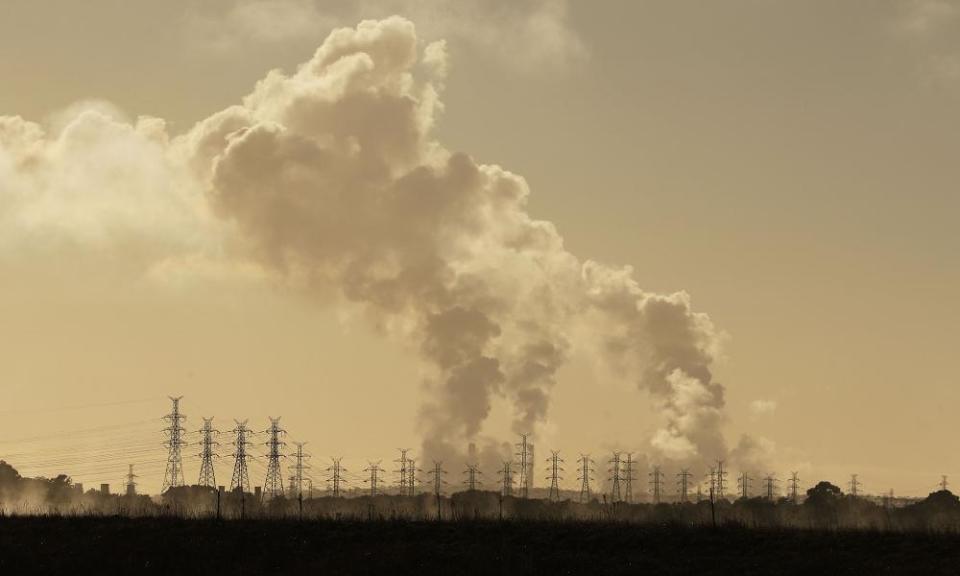Record drop in electricity emissions cancelled out by rises in other sectors

Emissions from the electricity sector in the three months to June dropped by the biggest amount on record, as the effect of the Hazelwood coal-fired power station closure is seen for the first time in quarterly projections produced exclusively for the Guardian.
But even that drop wasn’t enough to stop Australia’s overall greenhouse gas emissions from continuing to rise. Emissions from almost every other sector – industrial energy, transport, industrial heat and agriculture – all rose. They are the highest levels seen since before the carbon tax was repealed, according to projections by consultants at Ndevr Environmental.
The results mean Australia has now consumed 24% of its carbon budget set by the government’s Climate Change Authority – the total amount of carbon it can release from 2013 while doing its fair share to keep global warming under 2C. Once a certain amount of carbon goes into the atmosphere, warming over 2C will be inevitable.
The report replicates the government’s methodology for its National Greenhouse Gas Inventory quarterly reports, which the government traditionally delays releasing for up to nine months, and has in the past saved up and released quietly in a batch just before Christmas.
Australia’s overall greenhouse gas emissions over the year to June 2017 were the highest since 2011, with emissions rising steadily since the carbon tax was repealed in 2014.
The most recent quarter – the three months to June 2017 – also had the highest emissions for any June quarter since 2011, rising to 3m tonnes more than the same quarter last year.
However, emissions from electricity dropped significantly, by about 4.3m tonnes compared with the previous quarter, or about 2m tonnes compared with the June quarter last year. The drop was mostly due to the closure on 1 April of the Hazelwood power station, which was Australia’s most polluting generator.
Increased generation from Snowy Hydro in the quarter also contributed to the lower emissions from the electricity sector, said Stephen Christos from Ndevr Environmental.
But that reduction was overwhelmed by other sectors, which all increased or stayed stable.
The most notable increase was in the “stationary energy” sector, which includes fuel burned for heat and energy in industry other than electricity. Emissions for stationary energy were the second-highest on record in the most recent quarter’s projections, having risen steeply over the past year.
Among the significant factors pushing up the emissions in stationary energy are the three huge LNG production and export facilities in Queensland, which are also responsible for Australia’s tight and expensive domestic gas market. The liquefying and exporting of huge volumes of Australia’s gas has left the domestic market with relatively little gas, pushing up costs for consumers.
The drop in emissions from electricity over the past 12 months was cancelled out by the increase in emissions from stationary energy, with electricity dropping by 5.3m tonnes and stationary energy growing by 5.8m tonnes.
Transport emissions also rose significantly – by more than 2.2m tonnes above the same quarter last year.
The results are drawing Australia further from its carbon reduction targets made after the Paris climate agreement, which was adopted in December 2015.
Compared with a hypothetical situation where Australia cut its emissions linearly from when they were made according to its commitment, Australia’s most recent quarterly emissions are now exceeding its Paris commitments by 5.53m tonnes, and exceeding the science-based cuts recommended by the Climate Change Authority by 14.74m tonnes.

 Yahoo News
Yahoo News 